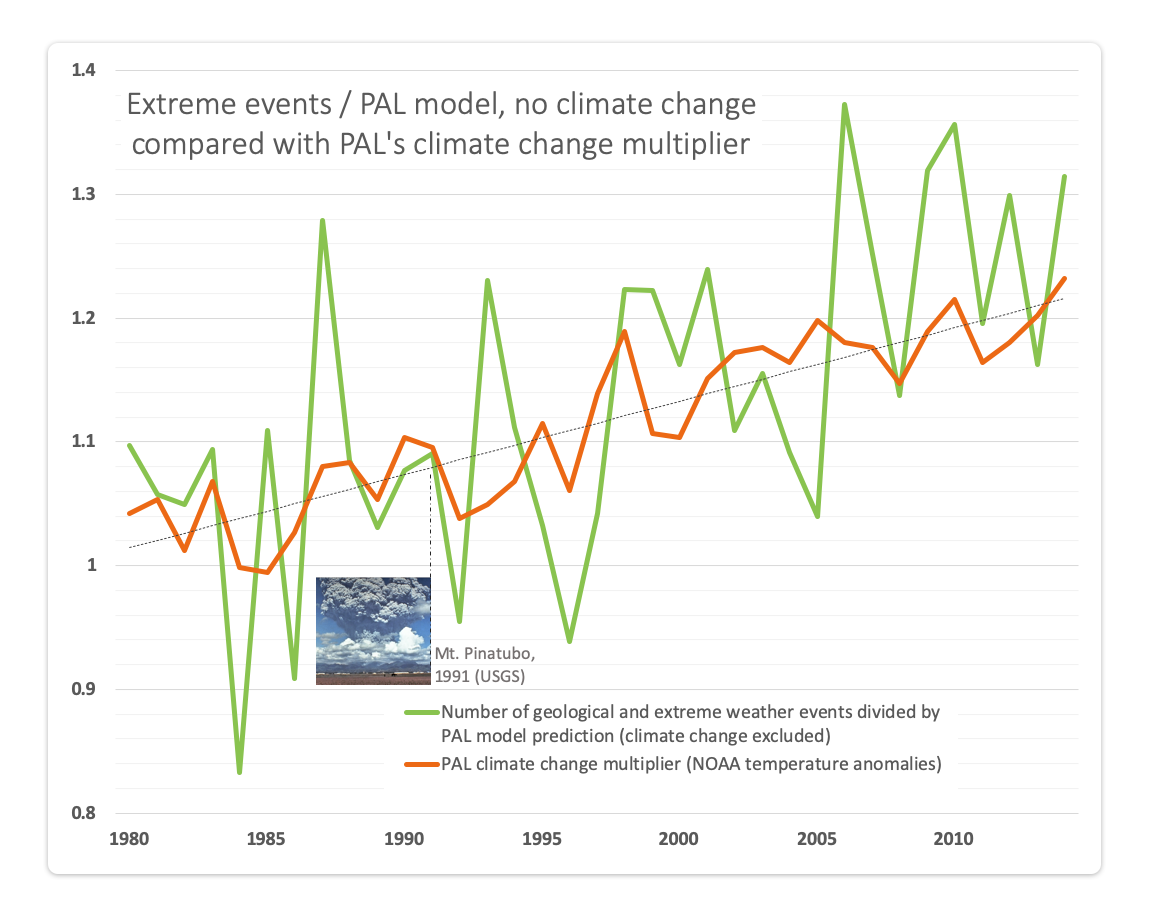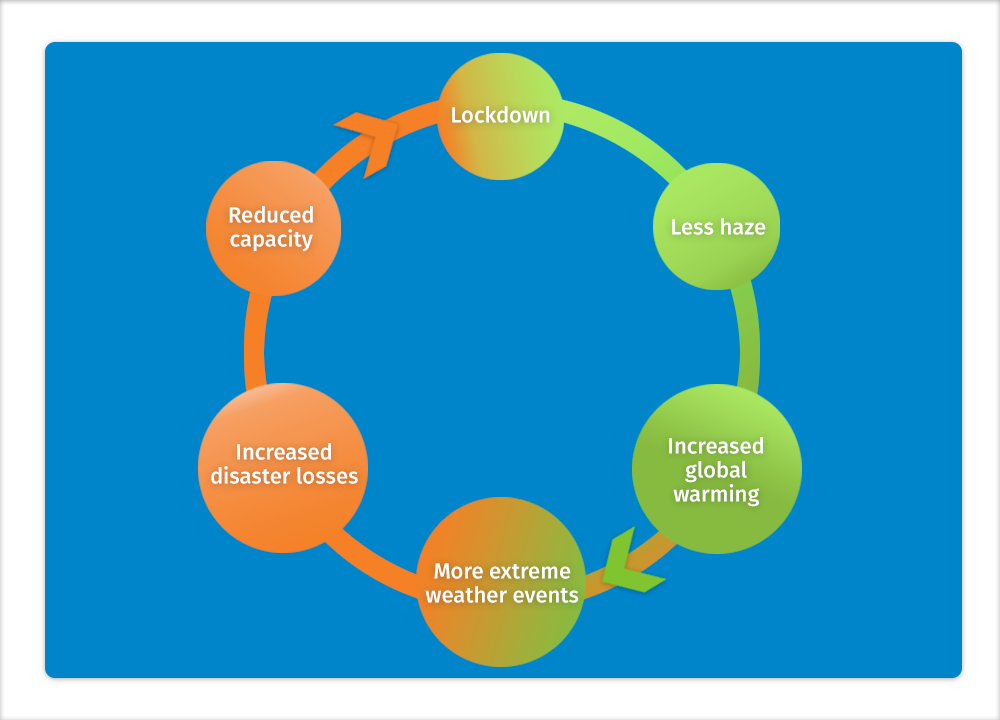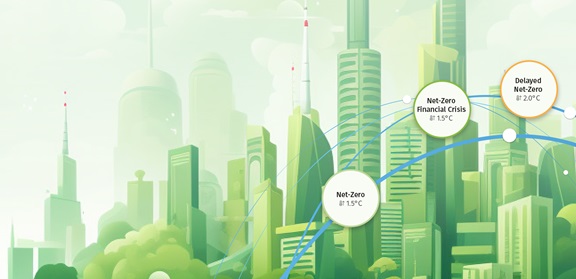The sudden, unprecedented cessation of industry and transport and lockdowns in China, Europe, the US and elsewhere has caused some extraordinary changes in the earth’s atmosphere. These are early days. The ultimate reach of the virus and the land area affected will have a significant impact on climatic conditions.
Satellite imagery from China shows that great swathes of the country have experienced a stark improvement in air quality , with reduced particulates, haze and photochemical pollutants such as nitrogen oxides.
This means more direct sunlight is reaching the ground and sea. Although these changes give the world a heartening glimpse of what a future, clean energy world might be like, they also bring hidden dangers for our already CO2-burdened world.
In developing its groundbreaking extreme weather prediction and loss tools, PAL noticed some curious patterns in the number of extreme weather loss events recorded by the reinsurer Munich RE. The PAL model predicts very well the total number of extreme weather events each year, with an excess trend that is fully accounted-for by PAL’s climate change multiplier – even in 2013, there were 20% more events than would have been expected without climate change. However, on examining the details, we found that previously invisible effects are influencing the number of events – in particular, volcanic eruptions, haze and El Niño / El Niña events. There really is a ‘signal in the noise’.

Figure1 The number of excess disaster events determined by PAL correlates with PAL’s climate change multiplier (temperature anomaly) and major volcanic eruptions, haze and El Niño / El Niña events
Meteorologists across the world have observed that El Niño events and extreme volcanic activity such as the 1982 El Chichón and the super-massive 1991 Mount Pinatubo eruptions have caused perturbations in the global temperature anomaly; that is the temperature that nearly all of the world’s governments have committed to keep below 1.5°C – 2°C . Climate models predict these perturbations well; dust and aerosols create a cooling effect.
COVID-19 threatens to unleash a kickback: we are about to experience the opposite effect. The temperature anomaly will rise and, depending on the prevailing oceanic conditions, it is plausible that some regions will experience extreme heatwaves.
PAL is a systematic, data-driven risk model that determines the expected number and type of extreme weather events globally and locally, by country, now and over the next 10-15 years in detail and out to 2100 if required. PAL turns that information into loss and damage trends and insights – economic impacts, liability, dynamic risk maps and carbon pricing benchmarks. The model also delivers quantification as to what extent climate change is influencing those losses . PAL has determined the impact of each fraction of a degree of global warming. It runs into many billions of dollars. That impact depends very much, on where in the world you are. It is a chain of events…

Therefore, when a leading insurance market expert says there is ‘No coronavirus contagion for the catastrophe bond market’, they may be in for a surprise. According to John Seo, Co-Founder and Managing Director of Fermat Capital Management “A market crash cannot cause a cyclone or an earthquake to occur and while these catastrophic natural disasters do happen – and drawdowns will happen with time – when they do they are independent of the ongoing activity in the traditional financial markets .” The proven success of PAL seriously challenges such assumptions. Moreover, if extreme weather events strike in the near future, the ravages of COVID-19 will much impair the capacity of many cities and regions to respond, conflating a human and financial super-catastrophe that is only just beginning to unfold.
Two weeks on from Dr. Seo’s comments, it is apparent there is already some correlation between the catastrophe bond market and the wider financial market disruption, as buyers and sellers seek to re-position themselves under highly volatile conditions . Yet, the market narratives ignore the potential significance of COVID-19 at their peril: its effect on the climate will surely turn up the heat on climate-attributable extreme weather losses.
Sources
1 https://www.theguardian.com/environment/2020/mar/23/coronavirus-pandemic-leading-to-huge-drop-in-air-pollution
2 https://unfccc.int/process-and-meetings/the-paris-agreement/the-paris-agreement
3 https://www.ortecfinance.com/en/about-us/news-and-events/dynamic-climate-change-informed-disaster-and-catastrophe-modelling-now-integrated-within-our-ces-solution
4 https://www.artemis.bm/news/no-coronavirus-contagion-for-the-catastrophe-bond-market-seo/ 5 https://www.artemis.bm/news/coronavirus-effect-clear-in-cat-bonds-but-private-ils-outperforms-schroder-secquaero/
Contact











